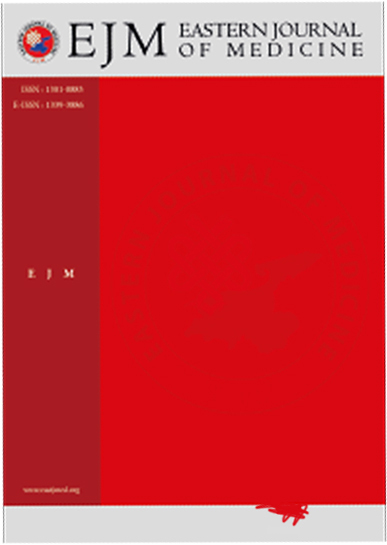Frequency of ıntestinal parasites in patients with diabetes
Maksut Şahin1, Zeynep Taş Cengiz1, Ahmed Galip Halidi2, Selahattin Aydemir1, Abdurrahman Ekici11Van Yüzüncü Yıl University, Faculty Of Medicine, Department Of Parasitology, Van2Mus Alparslan University, Bulanık Vocational School, Mus
INTRODUCTION: This study aims to determine whether patients with diabetes are at risk for intestinal parasites.
METHODS: The study included 200 diabetics and 150 healthy individuals without any chronic disease. Data such as age, gender, diagnosis, and patient laboratory test results were obtained from the hospital automation system. Stool samples were examined by native-Lugol, concentration, modified acid-fast, and trichrome staining methods.
RESULTS: Intestinal parasites were found in 27.5% of the diabetic patients and 14% in the control group; the difference between the two groups was statistically significant (p=0.001). Out of 200 patients, Blastocystis hominis was found in 44 (22%), Cryptosporidium spp. in one (0.5%), B. hominis and E. coli in five (2.5%), Giardia intestinalis in two (1%), B. hominis and G. intestinalis in one (0.5%), Taenia spp. in one (0.5%) and Chilomastix mesni in one (0.5%). In the diabetic patient group, statistically significant differences were found between age (p=0.043), duration of diabetes (p=0.006), fasting blood glucose (p=0.028) and HbA1c value (p=0.01) and presence of intestinal parasites. No statistically significant differences were found between place of residence, biochemical values such as cholesterol and LDL, use of insulin and antidiabetic agents, presence of another disease such as hypertension, COPD, neuropathy, nephropathy and intestinal parasite positivity.
DISCUSSION AND CONCLUSION: Patients with diabetes can be considered a risk group in terms of intestinal parasite infections. Furthermore, individuals with a history of diabetes of more than 10 years and poor glycemic control are at a higher risk for intestinal parasites.
Manuscript Language: English














